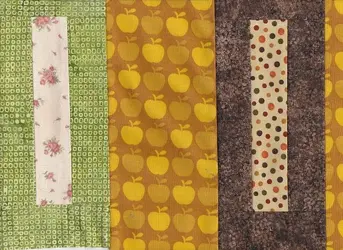]
My grandma used to make those ^^^, a couple each year; usually made of wool (and later polyester) scraps. They were beautiful. She used heavy flannel for the backing, and cotton, unbleached batting in between. She'd work on them all year, then when they were ready to assemble she'd call her relatives & inlaws and 3-4 ladies would converge on the house. They'd put the quilt in a big frame, and everyone would tie it.
I know I've already answered this post once, but that top quilt is an absolute masterpiece of workmanship.
I agree, Sunshine. The Trapunto leaves, stems, and figures are totally outstanding when you realize that in that era, the women separated fibers carefully to stuff the tiniest bits of cotton batting into the highlighted areas through the pores, and when done, carefully moved the warp and weft threads back into their original woven positions. The women of Washington State have truly some of the best quilters who learned hand-me-down from mothers and their friends the most advanced techniques in the western world from pioneer times on. A publishing business named That Patchwork Place in Belleview, Washington, has one such descendant as its owner and author of many books on quilts, their care, and how to use them in decorations. Her name is Nancy Martin, and if you ever had just one of her quilts-for-the-home books, you'd know how rich her knowledge.
Not to take anything away from the American Quilter's Society! Paducah, KY is home to that wonderful group that publishes The American Quilter and a plethora of the most advanced techniques, improved by contemporary quilt technicians and artists.


































